It’s time for an exclusive behind-the-scenes look into my new book, “Sewing the Curve”!
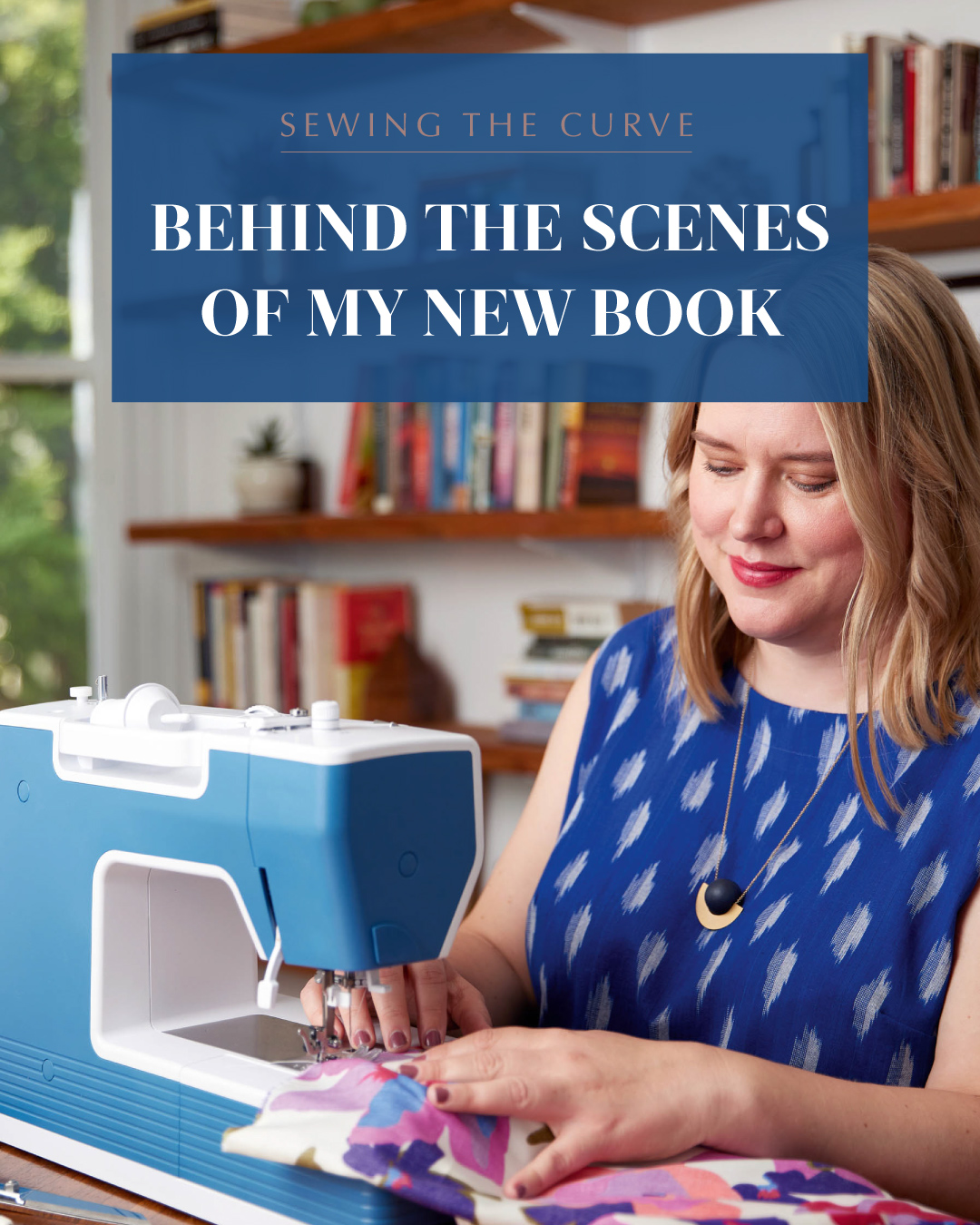
It has been so amazing to see the wonderful response to the announcement of my second book, “Sewing the Curve: Learn How to Sew Clothes to Boost your Wardrobe and your Confidence.” Thank you so much to all of you for your lovely comments, and pre-orders. Not picked up your beginner’s sewing guide yet? “Sewing the Curve” is now available!
Today I wanted to tell you a bit more about how I wrote the book and give you a bit of insight into why it’s written exactly like it is. If you have any questions, just let me know below and I’m happy to answer—I’m pretty much an open book (maybe too much sometimes?!)
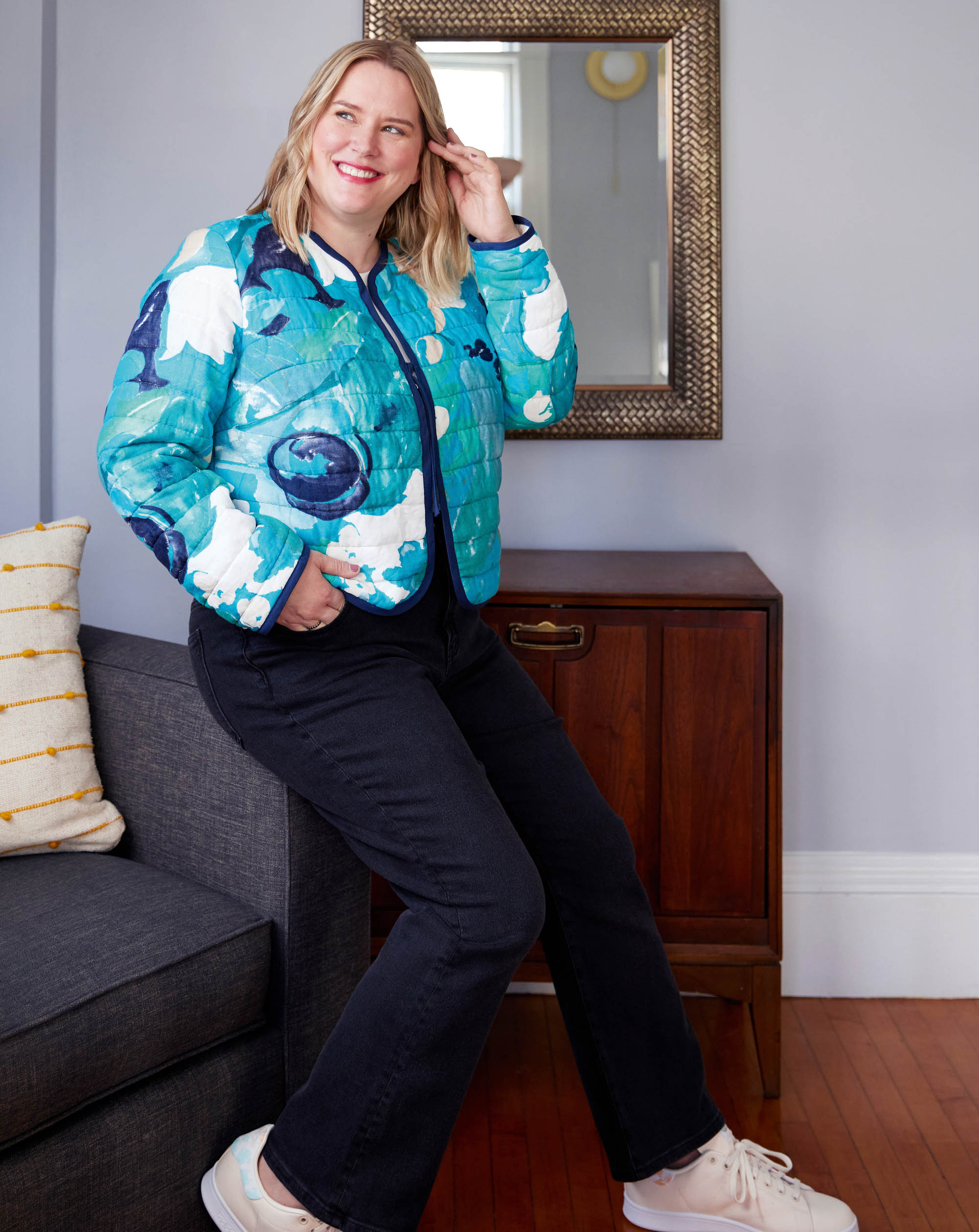
Why I wrote a book (mostly) for beginners
While “Ahead of the Curve” was for pretty much all curvy sewists, “Sewing the Curve” is more focused on a specific segment: aspiring and beginner sewists. When I polled our 4,000+ Cashmerette Club members last year about what I should write my second book on, I got a whole host of amazing ideas, from a follow-up to “Ahead of the Curve,” to a pattern book for advanced patterns, to more guidance for beginners. They were all great ideas – and who knows, maybe I’ll also write some of the other suggestions some day! – but ultimately, I decided to go with beginners.
There are a few different reasons for this. The main one is that to the best of my knowledge, there are literally zero books aimed at plus size beginners, and certainly none that include sewing patterns. In my experience, learning along with patterns is really essential if you’re going to be able to follow instructions, because it’s so helpful to be able to see what something looks like on a specific pattern vs. a generic image (that’s the same reason there are patterns in “Ahead of the Curve”). My personal mission is to get as many curvy people to learn the life-changing power of sewing, and writing the very first book to do that seemed like a good way to achieve it!
That said, I also wanted to make sure the book could be attractive for non-beginners, too, which is why I put a ton of thought into the patterns that were included (read on for more!). Needless to say, I think that the six patterns should be really appealing for any curvy sewist of any sewing level!
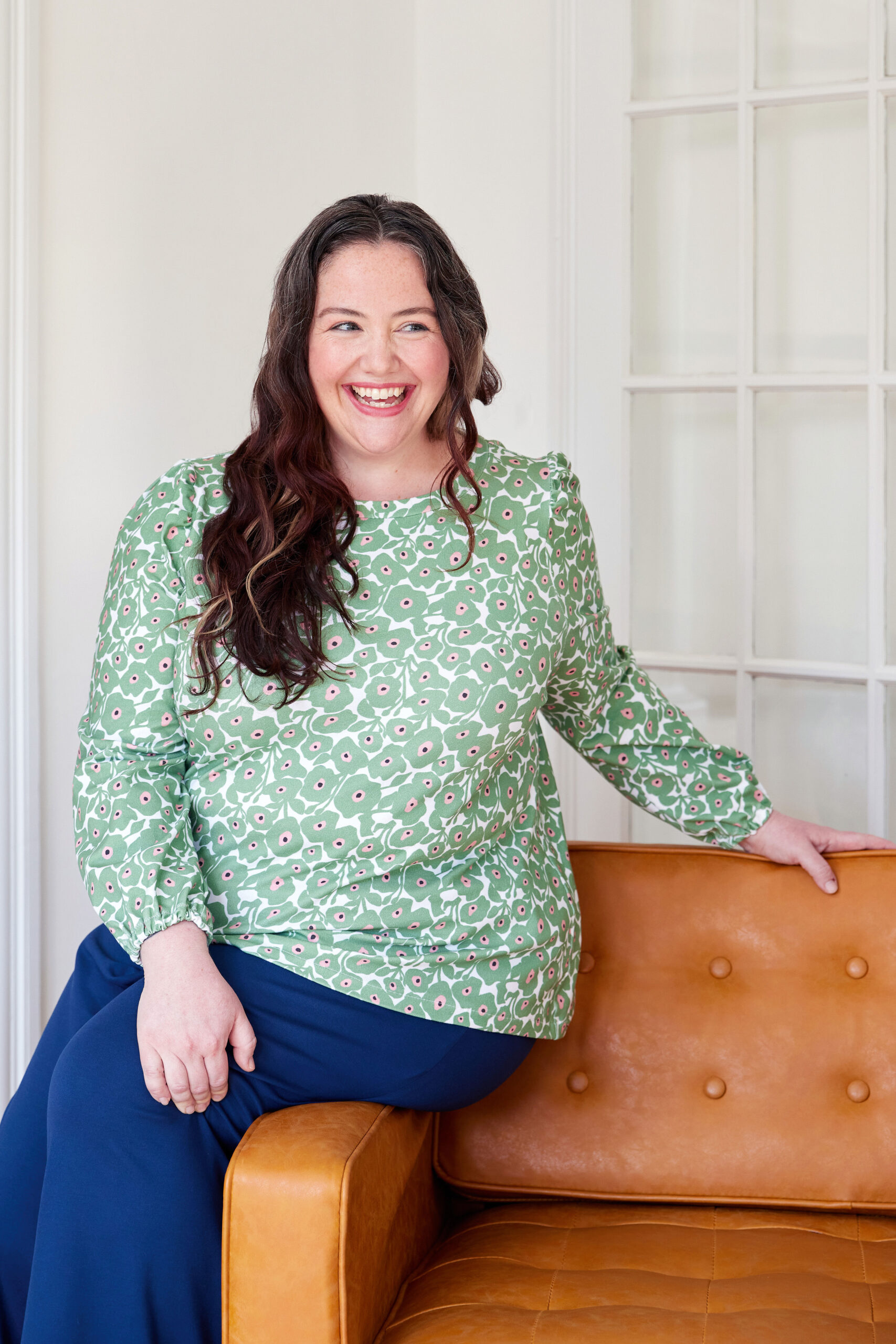
The writing process
Unlike last time, this book wasn’t written during a COVID lockdown in a different country! Which I can only say was a positive, hahaha. That said, I also had a lot less time to write it this time, and a much bigger business to juggle it with, thanks to the huge success of the Cashmerette Club.
Luckily, I had honed a lot of book-writing-organizational skills last time, and put them into action again. And, crucially, my amazing team once again covered for me a ton when I had to spend tons of time planning, writing and editing.
Naturally, the first thing I had to consider for “Sewing the Curve”, was what are the MOST important things you need to know in order to be able to sew garments? I started with a brainstorm with the team to think of all the points we thought were most fundamental – like threading a sewing machine, or backstitching – but also those that are critical to a good result but perhaps more easily overlooked – like understitching, pressing techniques, or understanding how to match fabrics to patterns. If anything, I always tend to write more than less (might be somewhat similar when I’m talking, ahem), so then it was a matter of honing it down to what was most key, and would fit in the scope of a 192 page book.
I also put a lot of time into thinking about what additional information would be specifically helpful for plus size sewists, that might be absent from existing “learn to sew” books. So the measuring and sizing sections are pretty different to what’s out there, and there’s lots of tips and tricks throughout to make the learning process as smooth as possible.
Once the plan was made, it was write, write, write!
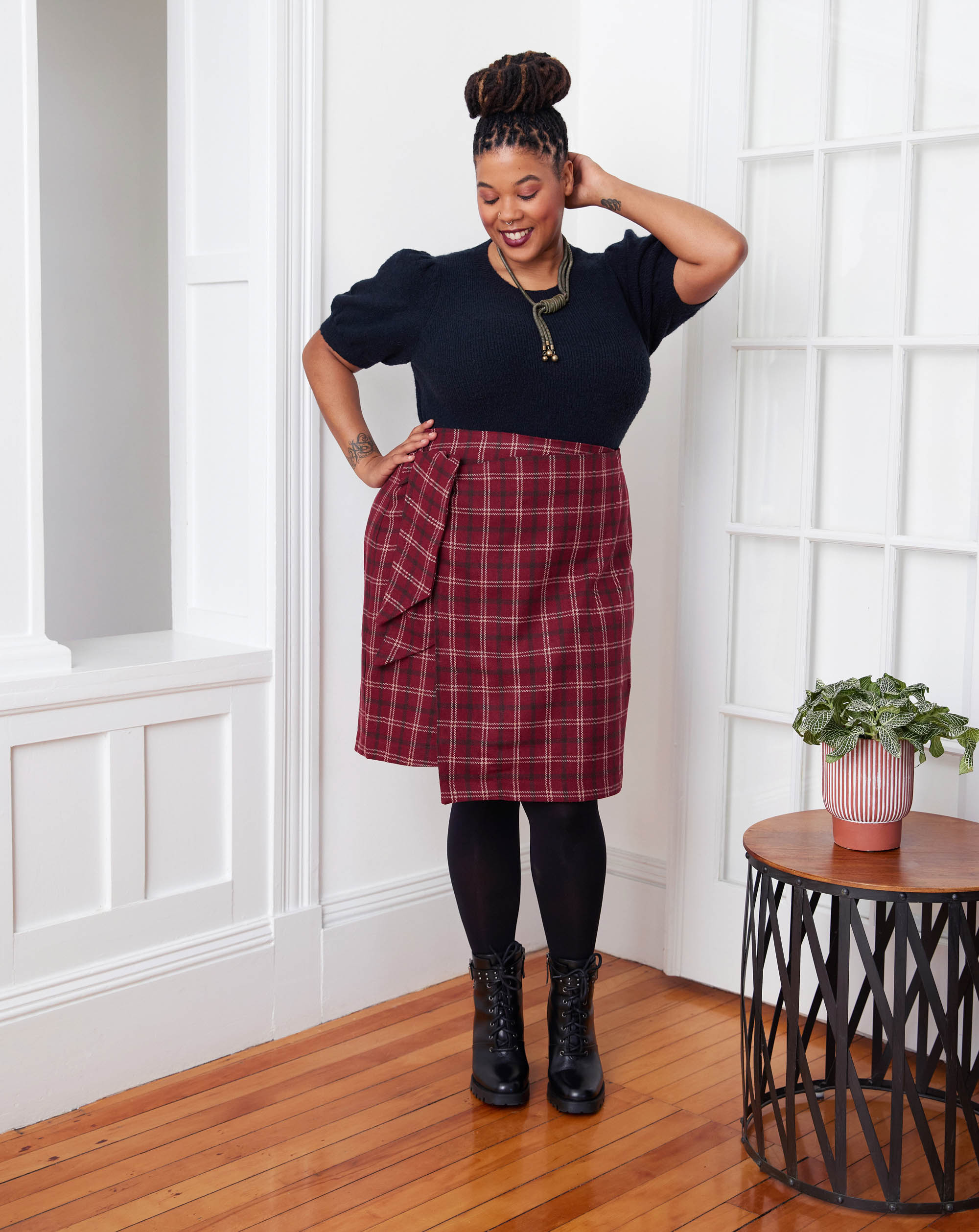
Creating the 6 new sewing patterns
As it happens, creating the sewing patterns for these books is often just as time consuming as doing the writing! To start with, I had to decide what the six sewing patterns would be. I wanted beginner-friendly patterns (obviously!), but they also needed to help people learn the specific skills I was teaching – whether that’s how to sew a dart, sew a visible bias tape edging, insert an invisible zip or create a beautiful hem. In addition, I wanted unique patterns that you haven’t seen from Cashmerette before, that would fill gaps in our range and be appealing to any curvy sewist, not just beginners.
So, a bit like with “Ahead of the Curve”, I worked backwards, starting with a list of all the skills, and then figuring out how I could address all of them in six patterns. It took a while to refine exactly what I wanted – and occasionally I’d try something that was a total disaster (somehow I seem to occasionally design hospital gowns?!) – but eventually we ended up with a fabulous line-up:
- The Montvale Dress and Tunic. This is the first pattern in the book, because it’s super-simple to construct and awesome for beginners. This pattern is a woven, swing dress and tunic, with the option for drop sleeves or a bias-faced sleeveless armscyes. Our swingy knit Wexford Dress was a huge hit in the Cashmerette Club, and I’ve had many requests for something similar in a woven , so this is it! Plus, you’ll learn how to insert side-seam pockets on your very first garment – a big sewing win.
- The Randolph Skirt. I’m a big fan of wraps, and wrap skirts are often used for beginner patterns because they’re fairly easy to sew. But I wanted to level up! So I created this gorgeous, asymmetric, chunky-tie design, which looks totally different depending on what fabric you use. It is truly an all-year-round pattern and I adore the samples we made.
- The Eustis Top. A “learn to sew” book has to have a t-shirt! But apart from Cashmerette’s signature curvy-fit, I elevated the Eustis with a chic puffed sleeve with a gathered sleeve cap and elasticated wrist – a great way to make the humble t-shirt a little more refined.
- The Ardley Pants. I think pants are often seen as super intimidating by beginner sewists, so the Ardleys are there to prove you can do it! They’re designed for a knit, and you can go super simple with jersey to make PJ bottoms, or create athleisure-style trackpants from ponte or terry – if the sample had only been in my size I totally would have stolen it… There are also slash pockets, a great technique to learn.
- The Fairfax Jacket. Have you looked enviously at the quilted jacket trend, concerned that a boxy fit would overwhelm your boobs and curves? Well I fixed that for you! The Fairfax is an on-trend quilted jacket but actually designed for big boobs, with a darted design in cup sizes C – H. As you can see from our faaaaabulous models – and also me, on the cover – it really is a show-stopper. I teach you how to create your own quilted fabric, or you can skip right ahead and use pre-quilted, like my Nani Iro version on the cover.
- The Elmley Dress. Just because you’re a beginner doesn’t mean everything has to be basic! The Elmley is a lined dress – with the option to be sleeveless or have flutter sleeves – that works just as well for formal day events as it does for a big night out. The Cashmerette community has been asking for a sheath dress for many years, and here it finally is!
Once I designed them, they were off to our pattern drafter, and then into the usual Cashmerette pattern pipeline of sampling, fitting, testing, alterations, processing and proofing. As you might imagine, adding another 6 patterns into our “usual” pipeline of 12 Cashmerette Club patterns and 2 – 3 Cashmerette Collection patterns was no mean feat! But luckily, I have no ordinary team, either.
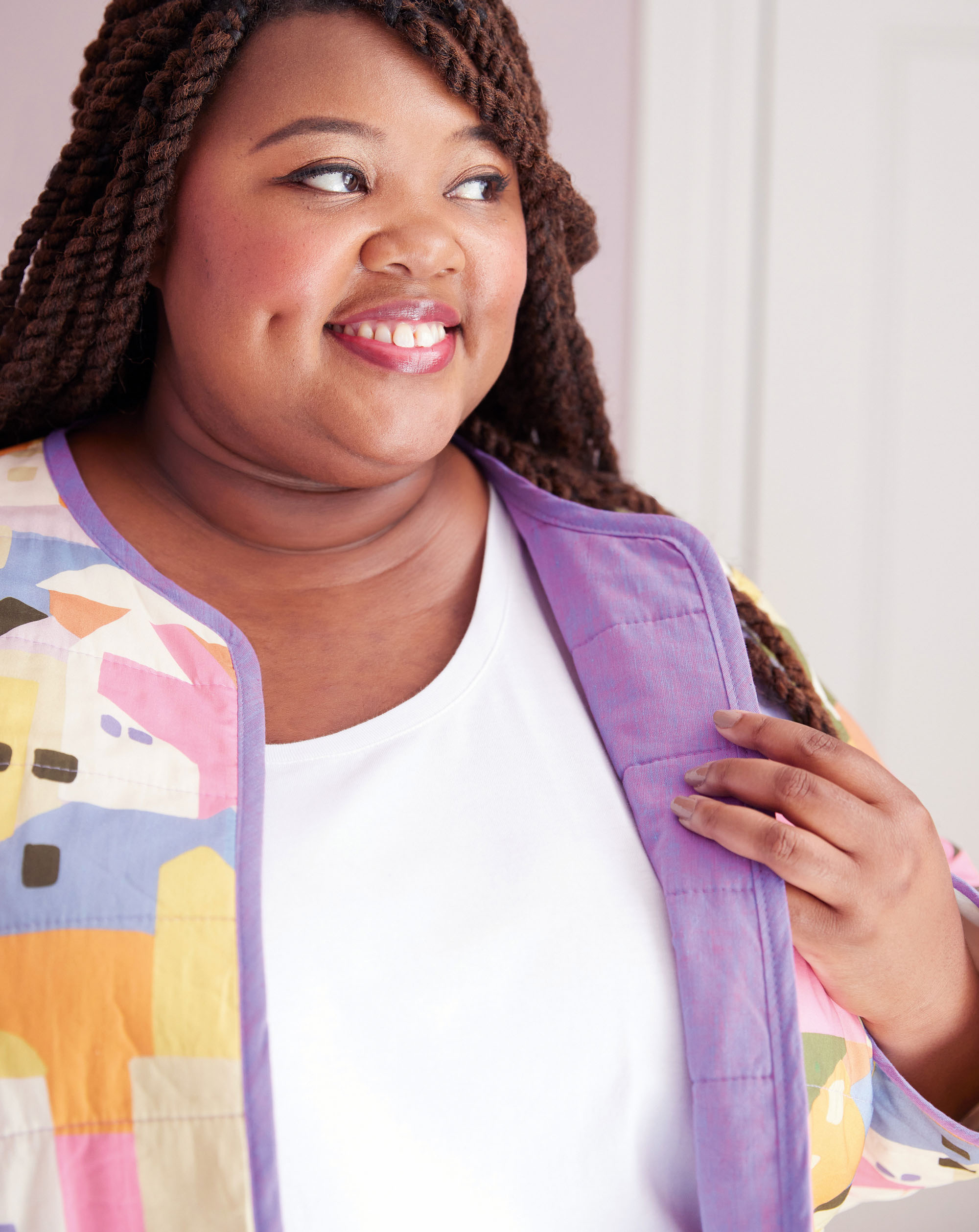
Photoshoot fun
As I’m living back in the US now, we did the photoshoots state-side, but this time it was a 5 day extravaganza! The tutorials in the book are full of lush step-by-step photos, so we had a lot more photography to do compared to “Ahead of the Curve.”
We ended up splitting the shoot into two, starting at a small studio with approximately 1,300 zip lock bags of pre-sewn samples, and a whole lot of hand modeling. Trust me, it’s pretty hard showing how to trim the thread from a buttonhole while clearly showing the buttonhole, thread, and not blocking the light with your hand! But I’m a pro, folks (ahem).
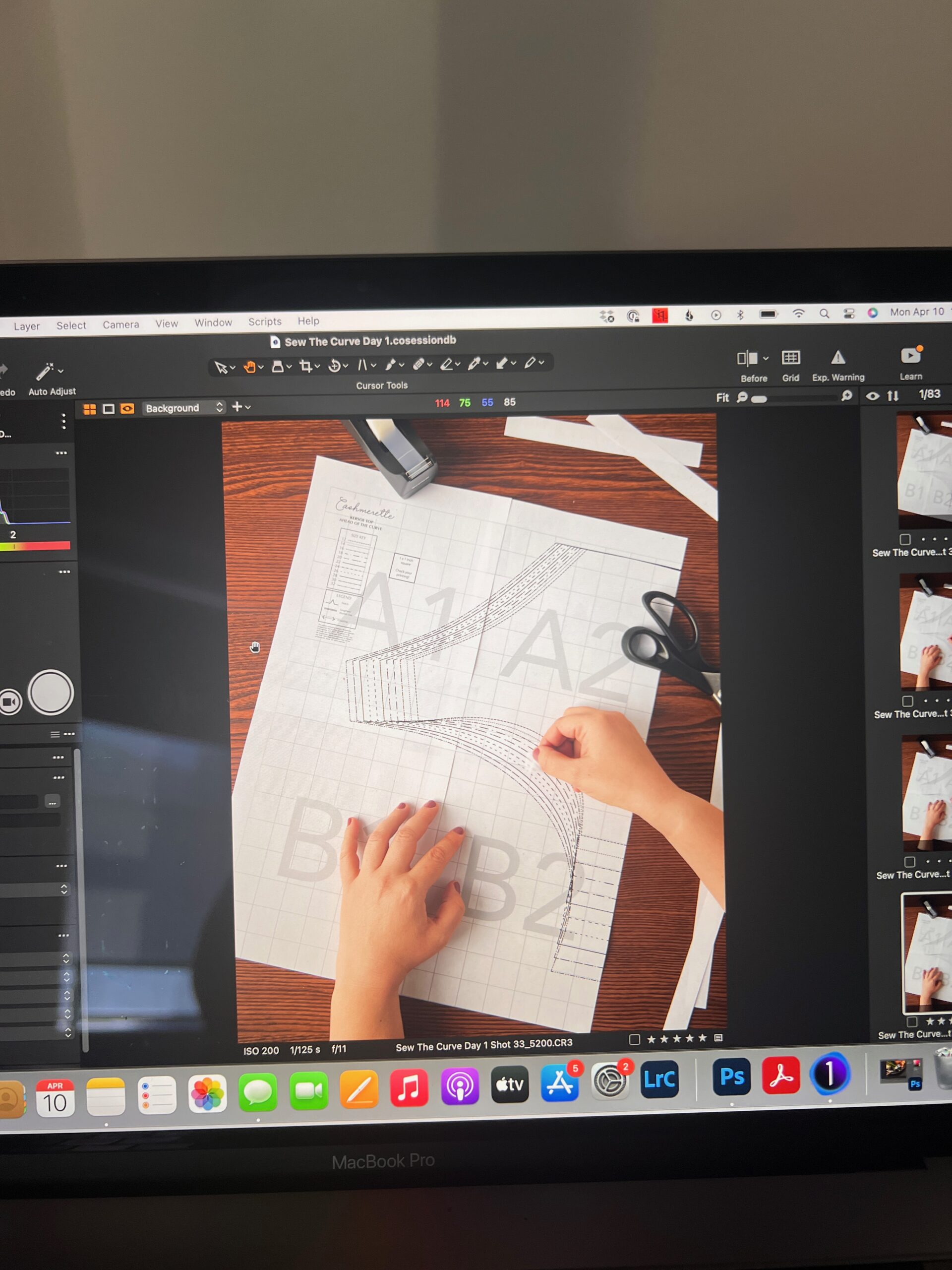
Hand model extraordinaire

Some quick-prints on the day
Then, we moved to a gorgeous shoot-house (like an AirBnB, except for photoshoots) just outside Boston. The massive amount of organization beforehand paid off as the team and I worked with military precision to get all the “glamour” shots done in just two days. We had amazing models – including Basma, who flew in from Alabama! – and a fantastic crew, who all mucked in moving furniture, doing last-minute hemming, hair touchups, and ordering endless amounts of coffee to keep us going.
As a fun bonus, I was at the end of a month of having strep throat and sinusitis, and still had laryngitis, so could only whisper for most of the shoot! Yes, in that cover shot I am pretty darn sick. Oh, what top hair and makeup folks can achieve.
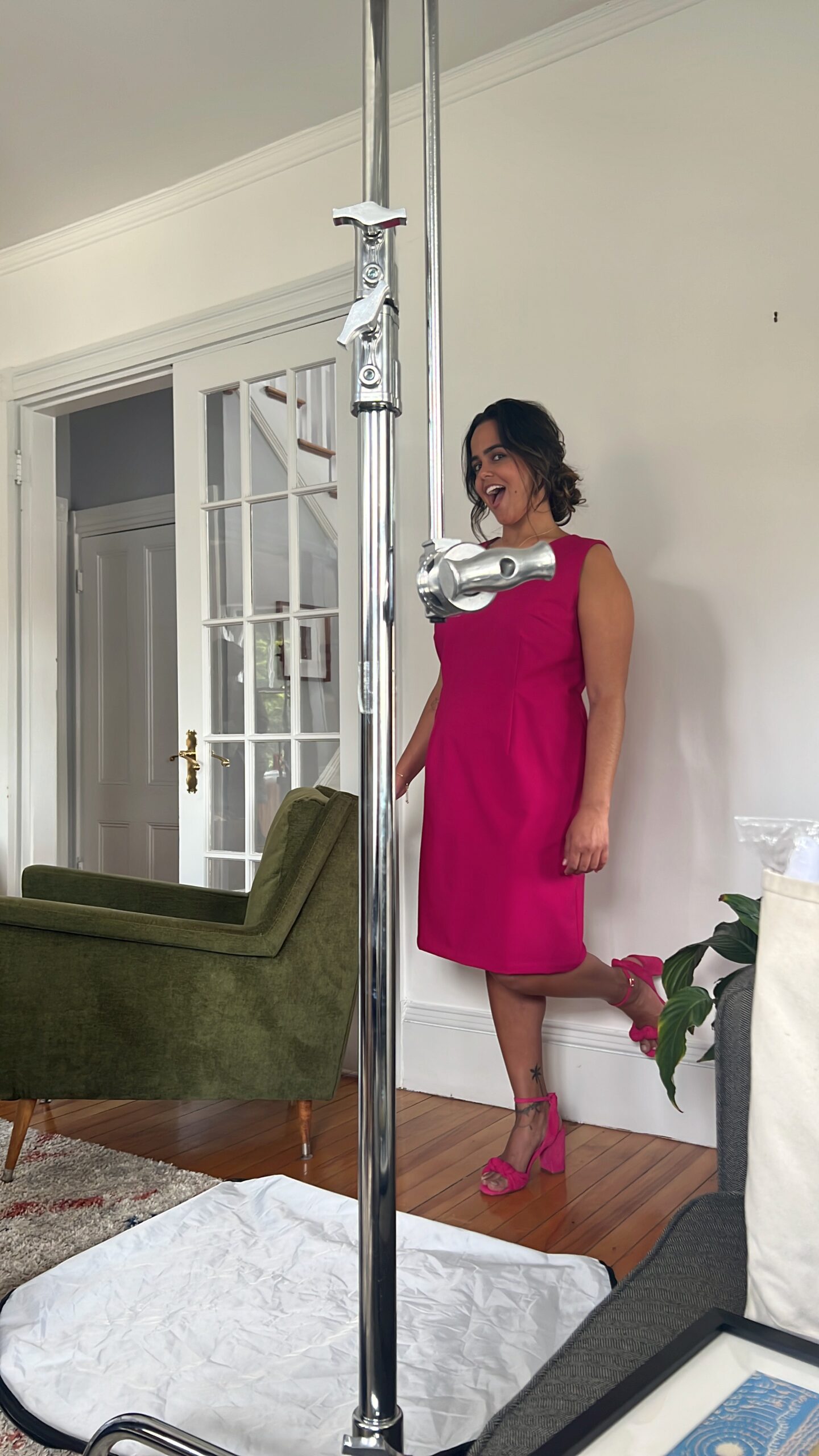
Ana knows how to work a hot pink dress
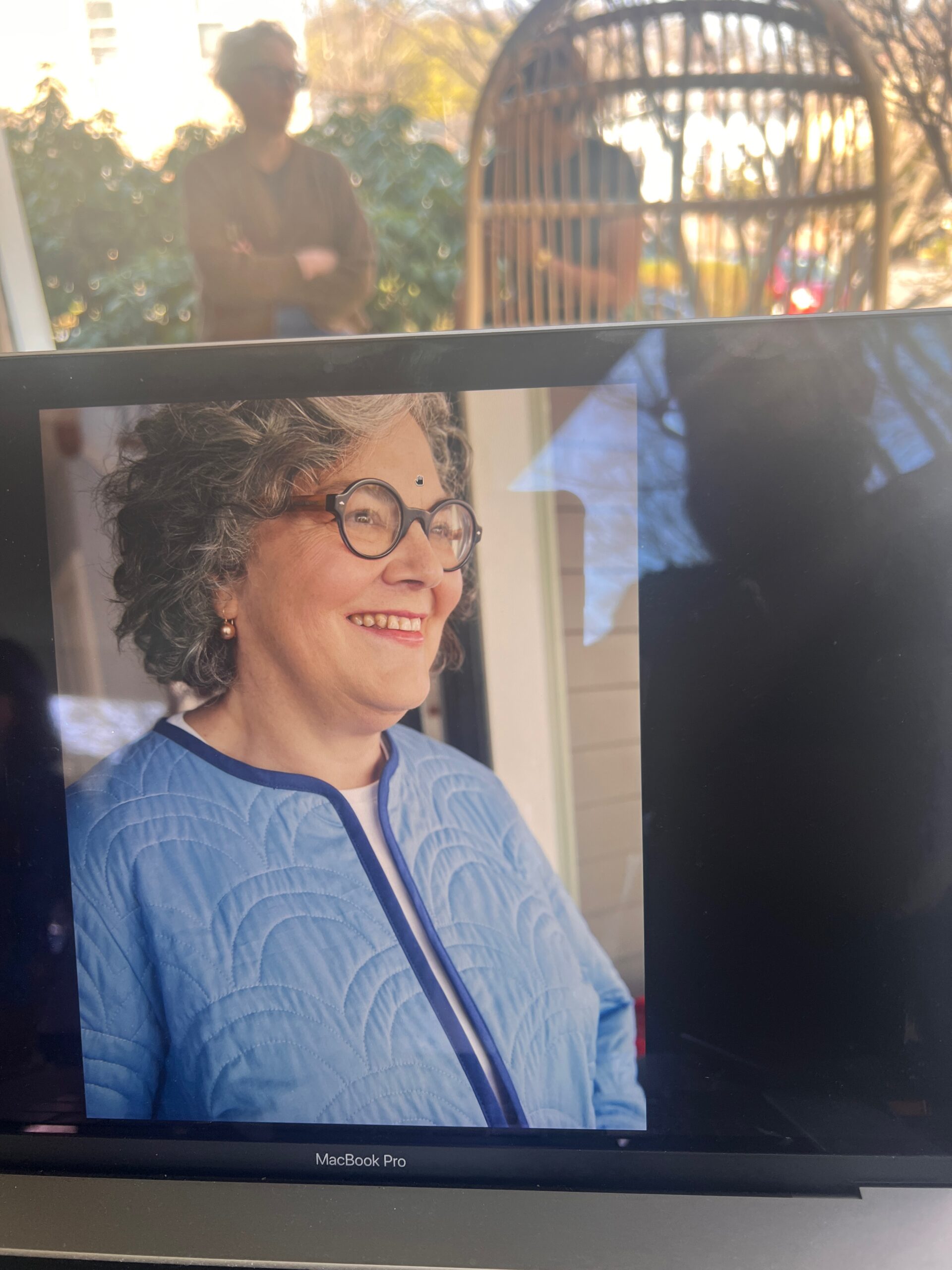
Cynthia doing some supermodeling
I’m always nervous at photoshoots because photos often make-or-break a pattern, or book, and sometimes fabric that looks wonderful in person suddenly looks really odd on camera (I’m looking at you, pink stretch twill…), but as soon as we started shooting I knew we were on to a good thing. We shot the cover on the first day as I was especially nervous about that, but our amazing photographer Linda (and digital assistant Dan) immediately started creating fantastic images and then I knew it was just a matter of smizing into the middle distance for long enough before we’d nail it.
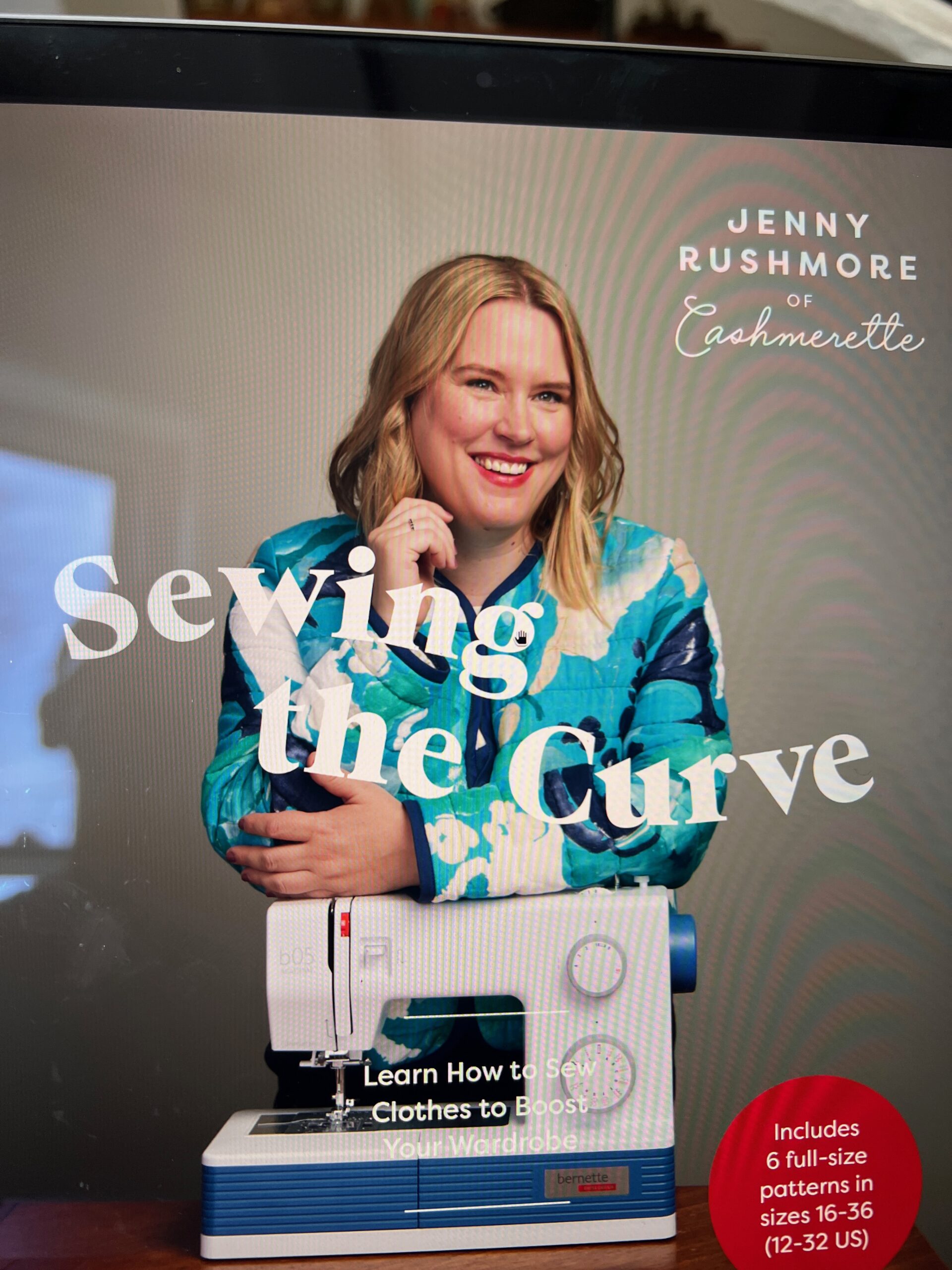
An alternative cover shot! We have an overlay at the shoot to see what the photos would look like with text over them.
At the end of the shoot I collapsed on my sofa and didn’t move for a week. Only joking, I’m a single parent (!). I did get a break two months later though, so shouldn’t complain 🙂
And finally, it’s done.
Phew! Are you tired reading all of that? There is no doubt that 2022/23 has been one of the busiest ever seasons for Cashmerette, but it’s also been by far one of the most satisfying. I’m so glad that I was able to write this book, and I so hope that you enjoy reading it. If you have any questions about the book, how I wrote it, or anything else, please let me know below!
Photos by Linda Campos

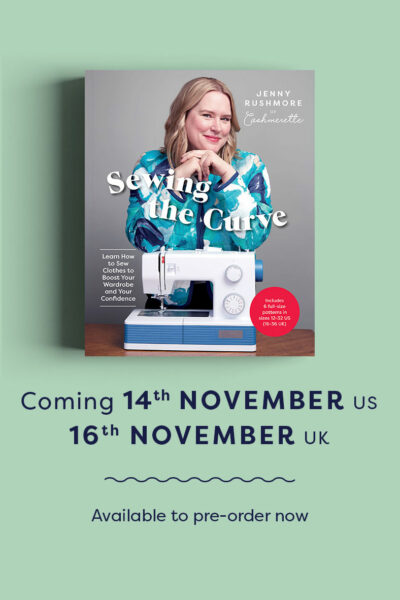

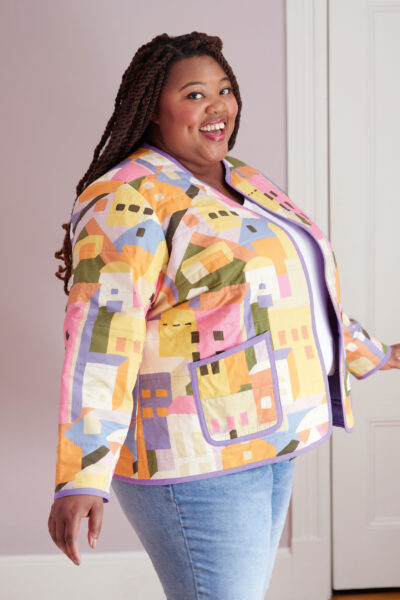

I’m a beginner (but I already have a huge fabric stash!) so I haven’t started my Ahead of the Curve book yet – I’m really looking forward to Sewing The Curve arriving! (I’ve pre-ordered in the UK) Perhaps I should start those patterns first?! I have CFS/ME so it’s not easy for me to sew but I’m hoping to make something soon!